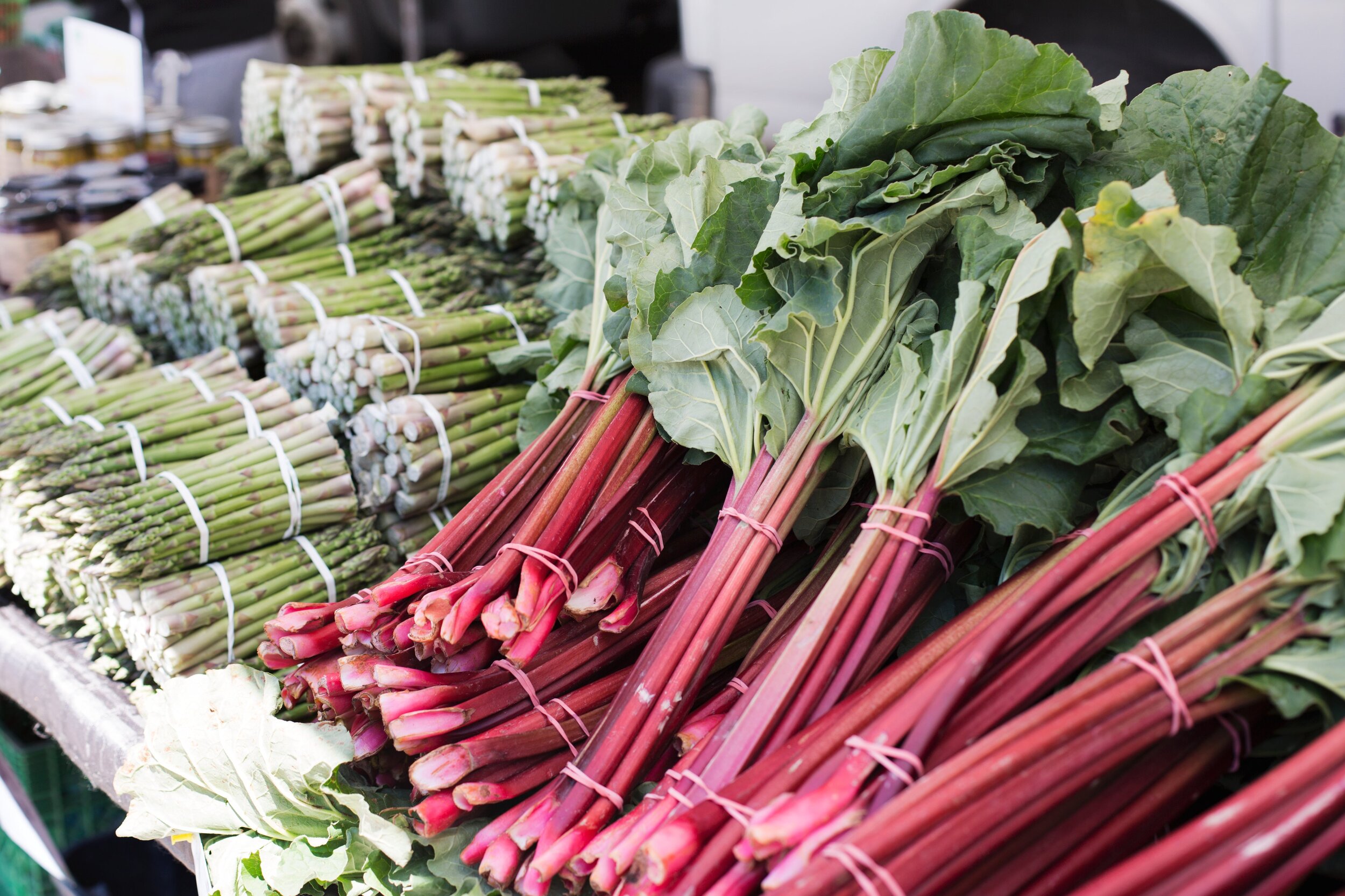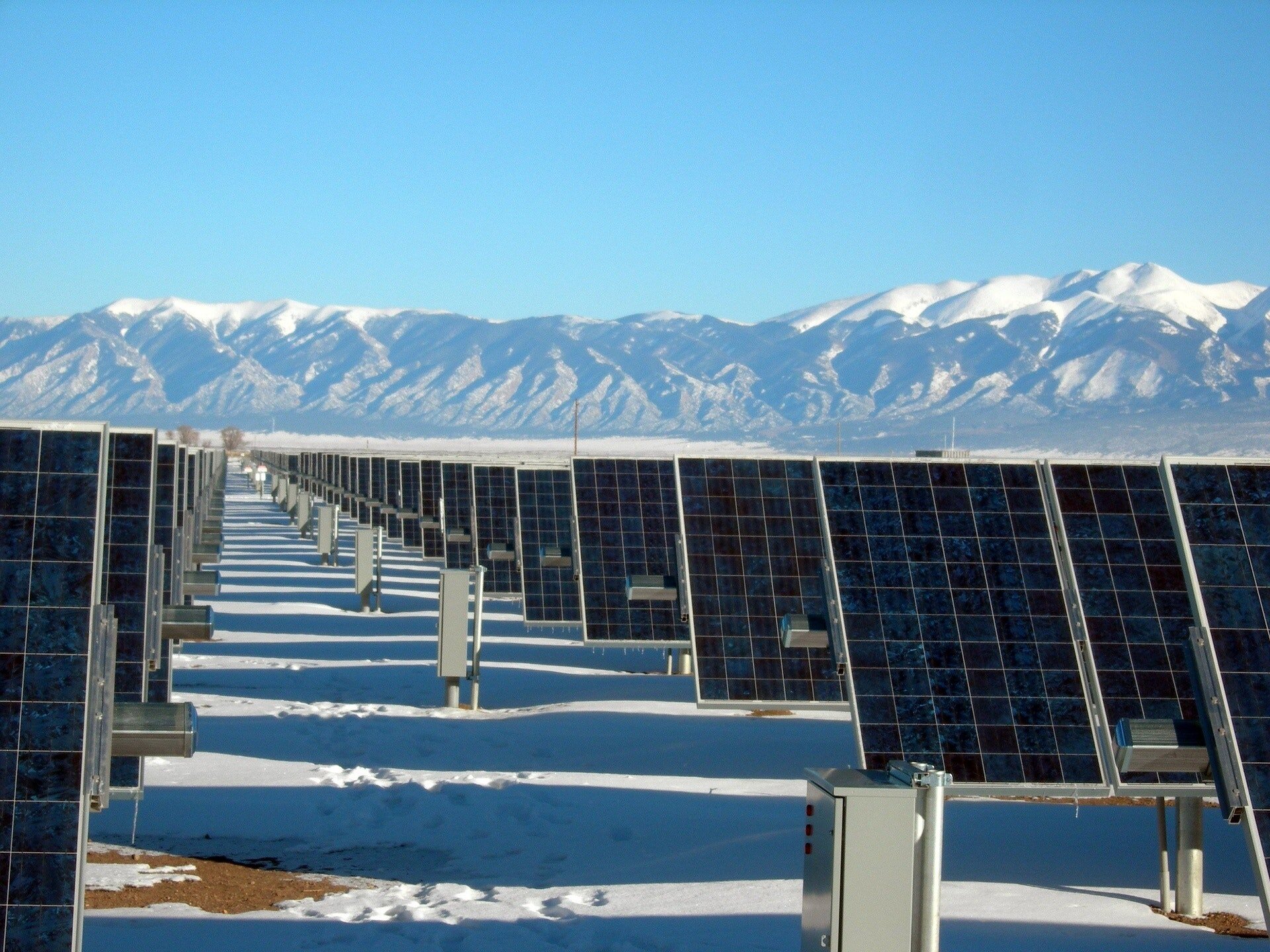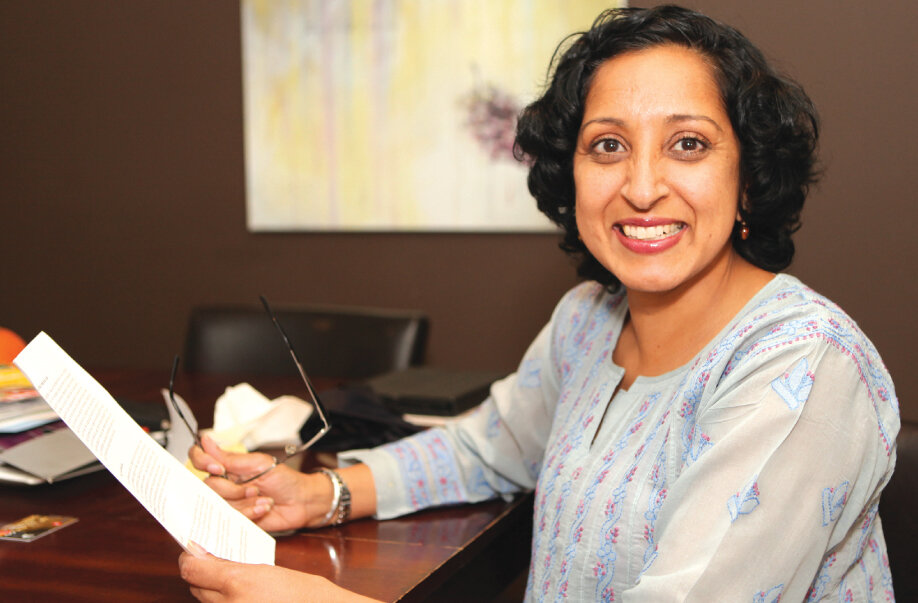MY TAKE
LOOK FOR ME IN THE “RACIST” AISLE!
Image credit: SARAH PFLUG from Burst.
By SHAGORIKA EASWAR
Old timers – real old timers, not those who sauntered in a mere quarter of a century ago – will tell you how difficult it was to source desi ingredients in Canada in those good old days.
One recounts the excitement at scoring a bunch of curry leaves on a visit to a desi grocery which was then divvied up between friends.
Another recalls trips made, day trips with friends and giant coolers, to bring back halal meat from distant cities.
They’d pack the meat with ice and hope it would last the journey home.
When we moved to Canada, desi grocery stores were still few and far between and concentrated mostly in Gerrard India Bazaar, aptly referred to as Little India.
We went there every few weeks to stock up on staples like dals and rice and felt hugely lucky if we spotted an “Indian” vegetable such as lauki or bhindi. Timing was everything and I’ve lost count of the number of occasions we were told they’d just run out of the coveted vegetable or fruit. Of the times I felt sadly deprived of my favourite fruit, guava.
As the community grew, stores catering to their needs also proliferated and while one still had to go to one, they were more readily accessible and there was way more choice.
One didn’t have Amrutanjan? Well then, the store right next door would certainly have it!
Thus when mainstream grocery stores began stocking ata, rice and spices, it was greeted with much joy. Even karela and Indian chillies.
Cue the drum roll!
If you had an on-the-ball person in charge, like the lady at our grocery, also curry leaves and coconut chutney. What more could one ask for?
I still make the odd trip to the desi grocery just for the fun of it, for old times’ sake, or to source slightly uncommon items like makhana. And take-out containers of tikki chaat or khichdi-kadhi that some stores have begun to sell.
But are they the cleanest places to visit? Perhaps not. So I am happy with my local grocery. And my little grandson loves picking up packets of Parle G biscuits and banana chips – amazed that they come all the way from India – on the occasions he accompanies me.
And so I fail to understand why anyone would see an “international aisle” at the grocery as racist as a recent newspaper article would have us believe.
Let’s face it, while many of us have expanded our repertoire to include other cuisines, when it comes to basic, everyday home cooking, we tend to stick to dal-roti, just as others stick to pasta, or to roast beef and potatoes.
I’ve seen non-desis grab packets of gulab jamuns and parathas in the frozen foods section and one pointed me to stack of bags of rice on sale when she heard me telling my husband we needed to pick up rice. They have expanded their repertoire, too, but the point is that they know where to find the stuff.
Do we want to hunt for creamed coconut for Thai veg curry in one aisle and saffron for kheer in another? No!
Supplying all ingredients in one aisle is just logical and convenient.
To me, it speaks of an understanding that Canadians come in all shapes, sizes and ethnicities and with different tastes. It speaks of inclusivity.
If you go looking for racism, you’ll find it.
Image credit: SARAH PFLUG from Burst.
Doing more with less energy goes a long way
By DAVID SUZUKI
In September 2019, a water main near the Vancouver Art Gallery blew, jetting water and rocks into the sky.
The water waste was impossible to ignore, but easy to fix. What about waste that isn’t visible, like energy seeping from homes and buildings? Most people aren’t aware of the enormous amount of energy – and money – lost through inefficient systems.
Providing the same or better services with less energy is critical to curbing climate breakdown. The International Energy Agency says energy efficiency alone could provide more than 40 per cent of the emissions reductions needed by 2040 to meet Paris Agreement targets.
The world is getting better at saving energy, but not fast enough to counterbalance growth or meet climate targets. Globally, we’re improving at about 1.8 per cent a year, but the Intergovernmental Panel on Climate Change’s special report on 1.5 C says annual investments in low-carbon technologies and energy efficiency need to increase by a factor of six relative to 2015 levels.
Technologies that allow us to do more with less energy have been improving dramatically. In Canada, innovators are designing buildings that collect solar heat in the winter, and use more and better insulation, heat pumps and smart thermostats. The Passivhaus standard, developed in Germany based on pioneering research in Saskatchewan in the 1970s, can reduce energy demand by as much as 90 per cent compared to conventional construction. These homes are less drafty, quieter and have better air quality. Structures using technologies such as solar PV panels can generate more energy than they use.
Dawson Creek, B.C.’s energy plan supports building audits and retrofits, LED traffic lights and a solar-ready bylaw and proposes local improvement charges to fund it. The sports centre in Colonsay, Saskatchewan, heats its waiting and observation areas with captured heat from ice-making at its rinks. Cities like Oslo, where renewable energy from waste powers 80 per cent of its heating system, are incentivizing energy efficiency with a fund to pay for initiatives.
Energy innovators like Rocky Mountain Institute co-founder Amory Lovins point to integrative design with fewer, simpler technologies to optimize energy use.
Take air conditioning. As temperatures increase under climate change, people crank up the AC, especially in already hot climates. Emissions from these energy-intensive units, which use potent greenhouse gases as refrigerants, cause further warming. The magnitude of this challenge led to creation of a Global Cooling Prize to revolutionize the AC industry. The solution lies in a radically efficient cooling technology with five times less climate impact, which is within technological but not economic reach – yet. Such a system, if developed, could help moderate up to 0.5 C in global warming by the century’s end.
Saving energy saves money, especially for low-income households that pay proportionally more for it. While energy-efficient buildings may cost more up front, energy savings can recover those costs within five years. Some jurisdictions are exploring ways to make upgrades more accessible to low-income households. Manitoba Hydro offers a home energy-efficiency loan paid back over time on monthly electricity bills, with no down payment.
That said, lower costs prompt some consumers to use more energy, creating a rebound effect and eroding climate benefits. Marrying efficiency to good climate policy can help avoid backsliding.
In addition to saving money, energy efficiency creates jobs. According to Energy Efficiency Canada, more than 436,000 people work in the energy-efficiency sector. That’s about 2.3 per cent of all jobs in Canada – more than in the oil and gas sector. Businesses predicted a growth of more than eight per cent this year.
Changing industry practices may prove the biggest challenge. About eight per cent of global energy use comes from metals and building material production. If we use less cement, steel and aluminum, we can reduce the energy required to extract, refine and transport them.
Credible climate plans must include strategies such as accelerating clean power, shifting to electrification, pricing pollution and using energy wisely. Moving from our throwaway economy to a less wasteful circular model will reduce the energy needed to power it and meet the rapid carbon emission reductions the IPCC prescribes.
We need to consume less, share more, design for efficiency and long life and make refusing, repairing, reusing and recycling our go-to options.
• With contributions from David Suzuki Foundation senior editor/writer Ian Hanington. More at davidsuzuki.org.
Image credit: MATTHEW HENRY from Burst.
The etiquette of donating
By DR VICKI BISMILLA
I have seen so many wonderful people donating good, gently-used items to charitable organizations.
When we donate items, we make sure that they are wiped clean and in decent condition so they can be offered with dignity. We make sure that the clothes we donate are always laundered, folded and neatly packed. Sometimes new clothes that have been kept too long and no longer fit are donated with tags.
I recently saw a Filipino family going the extra mile. They had laundered their clothes and the laundry tags were still on each item as they lovingly took a batch at a time on hangers from their car into the donation room.
However, on another weekend we saw donations that made our hearts sink. The donation room was filled to overflowing with junk. Dirty clothing strewn on the floor and in torn garbage bags. Broken bits of household items were scattered about and ridiculous items like cans of products with lids missing were lying on the floor. Our hearts went out to the volunteers and minimum wage staff who would have to sort through the junk that ignorant people dumped in the donation room. I spoke with the manager and she, too, was disappointed. She said that she would put up signs about the do’s and don’ts of items left in the donation room.
These do’s and don’ts are also available on websites such as www. valuevillage.com/donate/what-we-take. There are lists of items that they cannot take like automobile parts, damaged goods, hazardous materials, large appliances, weapons and definitely no baby furniture, strollers and car seats for safety reasons. Charities ask for gently used clothing, small household items that are in good condition, books and small electronics. They ask you to first check that these items are in working condition. The clothing is sorted and those which are laundered and in very good condition can be sold in their thrift stores. Other clothes and fabrics are sold to recycling companies or rag markets to be used to make other items such as mats. A small amount of clothing in good condition is shipped to places in the world in need of used clothing. However, many countries are refusing these items because the glut affects their own manufacturing industries.
So how do we control our own accumulation of stuff in our homes? As for gadgets, so many homes are glutted with myriad electronics that become obsolete really fast. The giant corporations who manufacture them keep putting out “new and improved” versions and keep their customers hooked onto buying often.
As for clothing, I think the best rule for me personally is to buy less. I have to guard against impulse purchasing and the lure of fast fashion. Better to have a few good items in the wardrobe that are classic and always elegant than having dozens of spur-of-the-moment “fashion” items that become passé and eye sores.
I remember when I was still a working woman, our college ran a “dress-up-for-success room”. Those of us who had gently used suits that we wished to donate, laundered them and hung them in this donation room. Students who needed to go on job interviews and couldn’t afford business suits were welcome to take what they needed and dress up for interviews, to wear to work or just to have for themselves. This is an idea that I hope more organizations would undertake not just for students but among all staff.
As we age, we find that we have the urge to cull our over-stuffed wardrobes and household storage areas. It is tiring work to clear our closets and basements stuffed with possessions. Our confession is that as teachers we have hoarded books. And now that we are ageing we are having to pack them into boxes and haul the boxes to donation centres.
So our advice to the young and middle aged shoppers is to not overbuy but be selective in what you buy and do not shop unnecessarily. You will one day have the huge job of culling your possessions which can be heavy-duty work. These days I only buy books from charitable used-books stores and once I read them I donate them back to the store so they can re-sell them.
• Dr Vicki Bismilla is a retired Superintendent of Schools and retired college Vice-President, Academic, and Chief Learning Officer. She has authored two books.
DEAR DIDI, what if my New Year’s resolution is not to make a resolution?
By KULBINDER SARAN CALDWELL
Dear Didi,
Does everyone have to make a New Year’s resolution? I used to, when I was much younger – the usual ones about studying for my exams well in advance and not leaving things until the last minute, keeping my room clean, etc. – but as I’ve grown older, I find them kind of pointless. A resolution is not going to make me lose weight or become a better person! But others don’t seem to get this and seem to think I am keeping my resolution secret for some deep, dark reason! How do I handle the constant questions? – UNRESOLVED
Nope. Not everyone has to make a New Year’s resolution.
But you’re right, many people do when they’re young since they go with the flow.
It’s usually what everyone is talking about at the beginning of the year which provides people with a clean slate and when many choose to make some changes in their lives.
Studying for exams, cleaning more and not procrastinating sounds like what you would vow to do when you are much younger; however, as you grow older, people change and evolve. You start to realize what is important and sustainable in your life.
Those that do choose to make a New Year’s resolution understand that it is very personal.
By definition, resolution is “a firm decision to do or not to do something”; therefore, each and every decision a person makes applies to them and them alone.
You don’t even have to make one if that’s what you chose to do, let alone share it with others if you don’t want to.
Let’s face it, most people want to know everything, even birthday wishes sometimes, and we all know that you aren’t supposed to tell the wish or else it won’t come true! You can use the same tactic here. I remember when I had to start to respond to questions with my honest opinions.
Many people from our community feel they know us just because we have been raised in a similar manner, but really, everyone has their own viewpoints on traditions that may or may not work for them.
I know that sometimes it wasn’t the most popular opinion, but if I stuck to my gut and I made sure that I answered honestly and with conviction, they understood that is where I stood. So tell them that you don’t make New Year’s resolutions – and you get to decide to share your reason or leave it at that. After all, it is always up to you to resolve to do something or not!
Have a wonderful year and I hope that it is everything that you decide to make it.
Jesus knows our need
By REVEREND TONY ZEKVELD
I know Christmas is past. That was December 25. Now it is January 2020. A new year has begun. But I would like to pass on the message of Christmas as we enter into the New Year 2020.
I want to share some words of encouragement with you, words from a professor who was also my professor some years ago.
The heart of Christmas is the birth of our Lord Jesus Christ. He the Son of God became man without losing His deity. “Jesus really is true God and true man at the same time, two natures held together in one Person, Jesus Christ.”
Why is this truth so important?
Because we have one who cares, one who knows our need! If Jesus was only a man, then “God has not entered history in order to touch it, save it and change it. But if Jesus is not a man, then God is still above us.”
Then He has not come to us on our level.
In order to be made like us, to be like the people He came to save, He took our flesh and blood. He became a true man in our history. He entered time and space. And this is a great, great comfort. Why so? As my professor says, “He knows what we go through. He knows. He understands temptations. He knows the loss we experience”.
He was tempted in every way like us, except He did not sin. He cried, when His friend Lazarus died.
He became man in order “to enter our suffering and join it, as He took our sins upon Himself, bore our sins on the cross”. That is, He died for the sins of all who trust on Him to be their Saviour. Today He lives, having overcome sin and death for all who believe in Him. He is not distant. He is near. He knows our need. He still knows what we are going through. He gives new life and strength. He has the power to because He is God!
As we enter a new year, know that Jesus cares. He understands. He knows our needs. He knows what we need. There is hurt; there is pain; there are puzzling situations. He knows. The world is in His hands. He promises that He will work it out for the good of all who trust Him.
• Reverend Tony Zekveld can be reached at 416-740-0543 and tzekveld@primus,ca.





